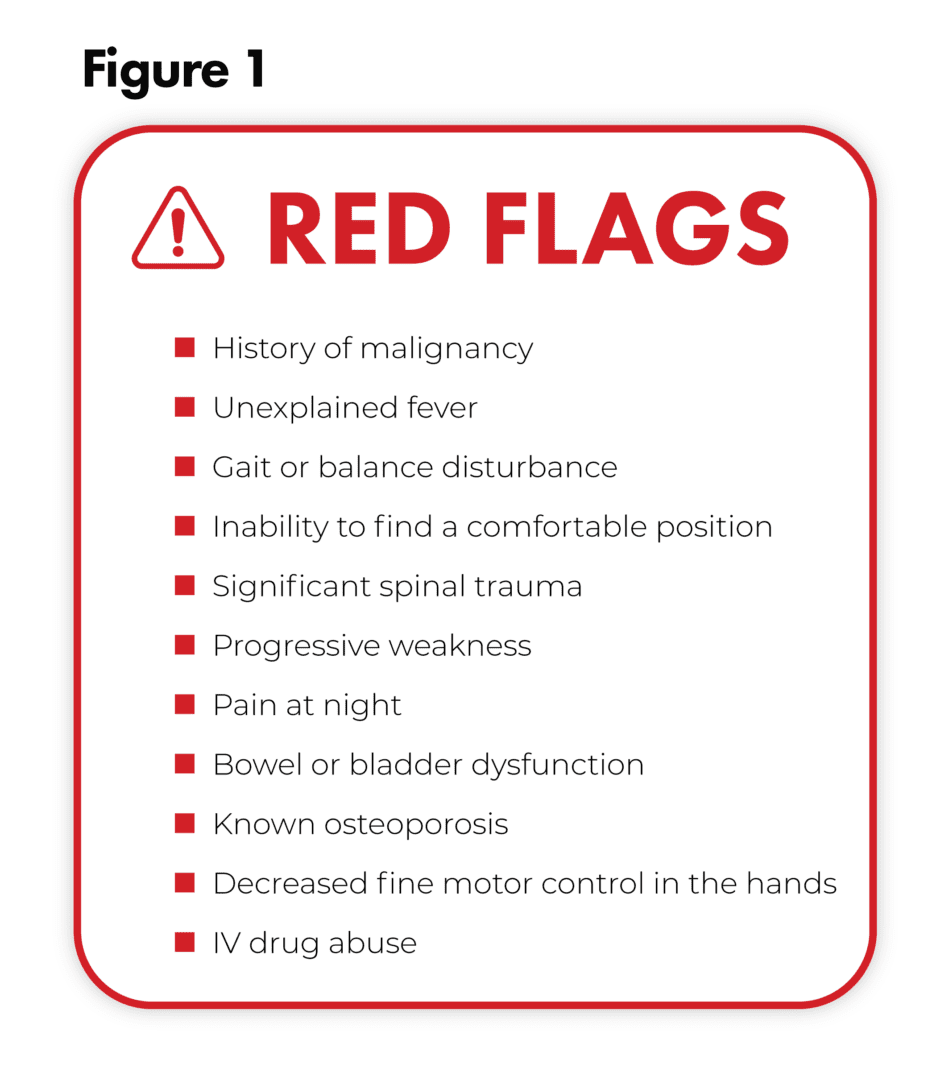By Kevin Moylan, DO, Center for Spine Health, Cleveland Clinic
Russell DeMicco, DO, Center for Spine Health, Cleveland Clinic
If you have not experienced neck pain, consider yourself lucky. Neck pain is incredibly common, as it is estimated that 10% of adults have neck pain at any one time. Fortunately, there are things to help if you do experience neck pain.
Neck pain can be caused by a number of things, and in many patients there are multiple factors playing a role. The most common causes of neck pain include muscle/ligament strains, facet joint osteoarthritis, cervical spondylosis (age related wear and tear), discogenic pain (painful discs), and cervical radiculopathy (nerve pain). The good news is, the vast majority of people get better with conservative treatment.
To guide a proper workup and treatment plan, neck pain can be broken down into categories based on chronicity (acute, subacute, chronic), as well as distribution (axial neck pain vs. radicular pain).

Acute Neck Pain (< 6 weeks)
In most patients with acute, nontraumatic neck pain, imaging (X-ray/MRI/CT) is not indicated. Acute neck pain can be treated conservatively with over-the-counter (OTC) pain medications (acetaminophen or NSAIDs), ice, heat, home exercises, stretching, and short-term use of a muscle relaxant.
Subacute Neck Pain (6-12 weeks)
Patients with persistent or worsening neck pain > 6 weeks in duration should be re-evaluated by a physician. A referral to a spine specialist may be warranted. X-rays of the cervical spine will likely be obtained. Without the presence of red flag symptoms (see figure 1), advanced imaging with CT/MRI is generally not indicated prior to completion of conservative treatment. If experiencing radicular pain/numbness/tingling from the neck into the upper limb(s), a short course of oral steroids could be considered to reduce inflammation. Treatment will likely include exercises and a referral to physical therapy for direction on stretching, strengthening, range of motion exercise, and to develop a home program. Other options that may be offered include massage, acupuncture, osteopathic manipulation, topical analgesics, and trigger point injections.

Chronic Neck Pain (>12 weeks)
Patients with neck pain longer than 3 months are at an increased risk of disability and long term functional impairment. If a patient has persistent or worsening symptoms despite conservative treatment and OTC medications, a trial of non-opioid analgesics may be indicated (prescription NSAIDs, tricyclic antidepressants, membrane stabilizers). MRI of the cervical spine may be ordered for diagnostic/interventional planning purposes. Based on MRI findings correlated with symptoms, image-guided injections could be an option. If a majority of your pain is axial (pain that stays in the neck), intra-articular facet joint injections with steroids may be considered as well as diagnostic injections, called medial branch blocks. If you are experiencing neck and radicular arm pain, a cervical epidural steroid injection may be offered.
Non-spinal Causes of Neck Pain:
Neck pain can also be caused by non-spinal pathology such as shoulder disorders (rotator cuff tears and impingement syndromes), myofascial pain syndromes (fibromyalgia), and autoimmune disorders (polymyalgia rheumatica). More serious causes of neck pain (fracture/cancer/infection) are rare, but may be considered in the presence of red flags.
Neck Pain Myths:
- Severe neck pain with or without radiating arm pain does not necessarily mean you need surgery. In reality, less than 5% of people will require neck surgery. Severe symptoms should be watched closely during your treatments.
- Regardless of severity, acute episodes of neck pain without trauma/red flag symptoms often do not need imaging. Remember that your spine ages with you. There is not a direct correlation between findings on imaging and severity of symptoms. It is possible to have severe neck pain with normal findings on imaging, and little to no pain despite significant pathology seen on imaging. XR/MRI/CT do not show pain.
- Despite what you may read online, there is no such thing as a perfect pillow for neck pain. The best pillow is the one that feels most comfortable to you while providing proper neck support.
- Neck braces may be helpful to some people in certain circumstances (wearing a soft collar at night to improve sleep quality), but for the most part, braces/collars should be avoided for routine and long term use as they may weaken neck muscles and delay recovery.
- Neck “popping” or “clicking” may be alarming (and even audible), but it does not point to a more sinister problem.
- Lastly, it is important to understand the difference between hurt and harm. Everyday activities, home exercises, and hobbies might hurt, but they do not cause any irreparable damage or harm.
Conclusion
In conclusion, neck pain is common and most often is caused by the various structures in the neck. Short-lived symptoms can be simply treated, however there are many treatment options available for more persistent symptoms, both non-surgical and surgical. Spine specialists can guide you through your treatment journey.



